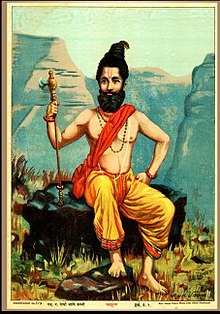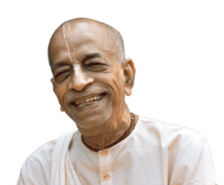
Subject: Sunday, April 26, 2020 Akshaya Tritiya [Mayapura, West Bengal;, Bharata bhumi time]
Birthday of Sri Parasu Rama \
Veda Vyasa commenced Maha Bharata
Candana Yatra
It is the day when Sudhama (kuchela) offered aval to Lord Krishna and got a bounty of wealth through the grace of Krishna.
The same day, Pandavas received Akshaya pathra (bowl) from Lord Krishna and thus were able to get unlimited food during their exile.
The day has the credit of Veda Vyasa starting the great Mahabharata with Lord Vinayak writing it.
It is the day Ganges came down upon the earth from heaven.
-
ayane viṣuve kuryādvyatīpāte dina-kṣayecandrādityoparāge cadvādaśyāṁ śravaṇeṣu catṛtīyāyāṁ śukla-pakṣenavamyām atha kārtikecatasṛṣv apy aṣṭakāsuhemante śiśire tathāmāghe ca sita-saptamyāṁmaghā-rākā-samāgamerākayā cānumatyā camāsarkṣāṇi yutāny apidvādaśyām anurādhā syācchravaṇas tisra uttarāḥtisṛṣv ekādaśī vāsujanmarkṣa-śroṇa-yoga-yuk
-
-
SYNONYMS
-
-
ayane—on the day when the sun begins to move north, or Makara-saṅkrānti, and on the day when the sun begins to move south, or Karkaṭa-saṅkrānti; viṣuve—on the Meṣa-saṅkrānti and on the Tulā-saṅkrānti; kuryāt—one should perform; vyatīpāte—in the yoga named Vyatīpāta; dina–kṣaye—on that day in which three tithis are combined; candra–āditya–uparāge—at the time of the eclipse of either the moon or the sun; ca—and also; dvādaśyām śravaṇeṣu—on the twelfth lunar day and in the nakṣatra named Śravaṇa; ca—and; tṛtīyāyām—on the Akṣaya–tṛtīyā day; śukla–pakṣe—in the bright fortnight of the month; navamyām—on the ninth lunar day; atha—also; kārtike—in the month of Kārtika (October–November); catasṛṣu—on the four; api—also; aṣṭakāsu—on the Aṣṭakās; hemante—before the winter season; śiśire—in the winter season; tathā—and also; māghe—in the month of Māgha (January–February); ca—and; sita–saptamyām—on the seventh lunar day of the bright fortnight; maghā–rākā–samāgame—in the conjunction of Maghā–nakṣatra and the full-moon day; rākayā—with a day of the completely full moon; ca—and; anumatyā—with a full-moon day when the moon is slightly less than completely full; ca—and; māsa–ṛkṣāṇi—the nakṣatras that are the sources of the names of the various months; yutāni—are conjoined; api—also; dvādaśyām—on the twelfth lunar day; anurādhā—the nakṣatra named Anurādhā; syāt—may occur; śravaṇaḥ—the nakṣatra named Śravaṇa; tisraḥ—the three (nakṣatras); uttarāḥ—the nakṣatras named Uttarā (Uttara–phalgunī, Uttarāṣāḍhā and Uttara-bhādrapadā); tisṛṣu—on three; ekādaśī—the eleventh lunar day; vā—or; āsu—on these; janma–ṛkṣa—of one’s own janma–nakṣatra, or birth star; śroṇa—of Śravaṇa-nakṣatra; yoga—by a conjunction; yuk—having.
-
TRANSLATION
-
One should perform the śrāddha ceremony on the Makara-saṅkrānti [the day when the sun begins to move north] or on the Karkaṭa-saṅkrānti [the day when the sun begins to move south]. One should also perform this ceremony on the Meṣa-saṅkrānti day and the Tulā-saṅkrānti day, in the yoga named Vyatīpāta, on that day in which three lunar tithis are conjoined, during an eclipse of either the moon or the sun, on the twelfth lunar day, and in the Śravaṇa-nakṣatra. One should perform this ceremony on the Akṣaya–tṛtīyā day, on the ninth lunar day of the bright fortnight of the month of Kārtika, on the four aṣṭakās in the winter season and cool season, on the seventh lunar day of the bright fortnight of the month of Māgha, during the conjunction of Maghā–nakṣatra and the full-moon day, and on the days when the moon is completely full, or not quite completely full, when these days are conjoined with the nakṣatras from which the names of certain months are derived. One should also perform the śrāddha ceremony on the twelfth lunar day when it is in conjunction with any of the nakṣatras named Anurādhā, Śravaṇa, Uttara–phalgunī, Uttarāṣāḍhā or Uttara-bhādrapadā. Again, one should perform this ceremony when the eleventh lunar day is in conjunction with either Uttara–phalgunī, Uttarāṣāḍhā or Uttara-bhādrapadā. Finally, one should perform this ceremony on days conjoined with one’s own birth star [janma–nakṣatra] or with Śravaṇa-nakṣatra.
-
PURPORTThe word ayana means “path” or “going.” The six months when the sun moves toward the north are called uttarāyaṇa, or the northern path, and the six months when it moves south are called dakṣiṇāyana, or the southern path. These are mentioned in Bhagavad-gītā (8.24–25). The first day when the sun begins to move north and enter the zodiacal sign of Capricorn is called Makara-saṅkrānti, and the first day when the sun begins to move south and enter the sign of Cancer is called Karkaṭa-saṅkrānti. On these two days of the year, one should perform the śrāddha ceremony.
-
Viṣuva, or Viṣuva-saṅkrānti, means Meṣa-saṅkrānti, or the day on which the sun enters the sign Aries. Tulā-saṅkrānti is the day on which the sun enters the sign Libra. Both of these days occur only once within a year. The word yoga refers to a certain relationship between the sun and moon as they move in the sky. There are twenty-seven different degrees of yoga, of which the seventeenth is called Vyatīpāta. On the day when this occurs, one should perform the śrāddha ceremony. A tithi, or lunar day, consists of the distance between the longitude of the sun and that of the moon. Sometimes a tithi is less than twenty-four hours. When it starts after sunrise on a certain day and ends before the sunrise of the following day, the previous tithi and the following tithi both “touch” the twenty-four-hour day between the sunrises. This is called tryaha-sparśa, or a day touched by some portion of three tithis.Śrīla Jīva Gosvāmī has given quotations from many śāstras stating that the śrāddha ceremony of oblations to the forefathers should not be performed on Ekādaśī tithi. When the tithi of the death anniversary falls on the Ekādaśī day, the śrāddha ceremony should be held not on Ekādaśī but on the next day, or dvādaśī. In the Brahma-vaivarta Purāṇa it is said:If one performs the śrāddha ceremony of oblations to the forefathers on the Ekādaśī tithi, then the performer, the forefathers for whom the śrāddha is observed, and the purohita, or the family priest who encourages the ceremony, all go to hell.Link to this page: https://prabhupadabooks.com/sb/7/14/20-23
- The holy river Ganges descended on Earth from the heavens on this day.
- This is the day when the sage Parshuram, the sixth incarnation of Vishnu, was born.
- Treta Yug, the period of the holy Ramayana, commenced.
- Ved Vyasa initiated the recital of the great Indian epic Mahabharata before lord Ganesha.
- Lord Krishna’s childhood friend Sudama, visited Dwarka to him and offered him a humble gift of poha (rice flakes). Therefore, Vaishnavas (worshippers of lord Vishnu) fast throughout the day and open their fasts with rice.
Akshaya Tritiya bears many religious specialities.
It is the birthday of Lord Parasurama of the Dasa Avatars of Lord Vishnu.
It is the starting day of the Treta Yuga after Satya Yuga.Thus, it is considered as the Ugadi thithi for Treta Yuga.
It is the day when Sudhama (kuchela) offered aval to Lord Krishna and got a bounty of wealth through the grace of Krishna.
The same day, Pandavas received Akshaya pathra (bowl) from Lord Krishna and thus were able to get unlimited food during their exile.
The day has the credit of Veda Vyasa starting the great Mahabharata with Lord Vinayak writing it.
It is the day Ganges came down upon the earth from heaven.
In fact, Akshaya Tritiya is considered very propitious for offering dhanams of goods like umbrella, sandals, hand fans, food etc.
Description
In Sanskrit, the word “Akshaya” (अक्षय) means “imperishable, eternal, the never diminishing” in the sense of “prosperity, hope, joy, success”, while Tritiya means “third”.[7][5] It is named after the “third lunar day” of the spring month of Vaisakha in the Hindu calendar, the day it is observed.[6]
Akshaya Tritiya is believed in Hinduism to be the birthday of Parasurama who is the sixth incarnation of Vishnu, and he is revered in Vaishnava temples.[8] Those who observe it in the honor of Parasurama sometimes refer to the festival as Parasurama Jayanti.[9] Alternatively, some focus their reverence to Vasudeva avatar of Vishnu.[6] According to one tradition, Ved Vyasa began reciting the Hindu epic Mahabharata to Ganesha on Akshaya Tritiya. Another legend states that river Ganges descended to earth on this day.Akshaya Tritiya
|

Sri Parasurama
